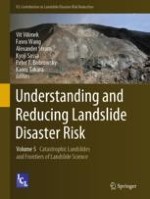2021 | OriginalPaper | Buchkapitel
Extreme Rainfall Induced Landslide Susceptibility Assessment Using Autoencoder Combined with Random Forest
verfasst von : Kounghoon Nam, Fawu Wang
Erschienen in: Understanding and Reducing Landslide Disaster Risk
Aktivieren Sie unsere intelligente Suche, um passende Fachinhalte oder Patente zu finden.
Wählen Sie Textabschnitte aus um mit Künstlicher Intelligenz passenden Patente zu finden. powered by
Markieren Sie Textabschnitte, um KI-gestützt weitere passende Inhalte zu finden. powered by
